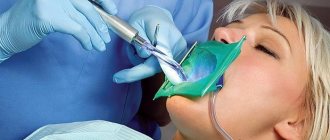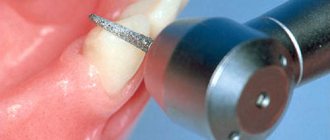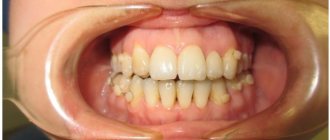- Home » Articles » Is it necessary to depulp a tooth under a crown?
14 September 2021
A dental crown is a prosthetic solution that allows the restoration of severely damaged teeth in situations where reconstruction cannot be performed with a composite material. Crowns can be made of metal ceramics, solid ceramics or zirconium (the most popular options). But they have one thing in common: a properly made crown can serve patients as long as a natural tooth. And the basis of proper manufacturing is proper preparation for prosthetics.
How we do it at Amazing Price Dentistry:
PROMOTION
Dental restoration, installation of fillings
from 2200 rub.
The importance of prosthetics
The main reason for refusals to install dentures is associated with the erroneous opinion of old-school dentists about the mandatory depulpation (removal of the nerve) of teeth before prosthetics. Before dispelling this myth, it is necessary to recall the importance of timely prosthetics.
Without an adequate prosthesis, neighboring healthy teeth begin to carry an unusual load, which leads to their increased wear, mobility and early loss. In addition, in the absence of even one tooth, speech defects appear, chewing functions are disrupted, bite pathologies occur, and even facial proportions are distorted.
Causes of frequent depulpations
Why do orthopedists so often remove pulp from teeth? The main reason lies in the desire of doctors to play it safe and avoid complications after prosthetics. The fact is that teeth have a porous structure. Pores are dentinal canals that run from the enamel to the pulp of the tooth. During grinding of teeth for a crown, mechanical irritation of the pulp may occur through these dentinal canals.
And at the last stage of fixing the prosthesis, there is a toxic effect of cement. And as a result - infection and death of the pulp. However, this does not allow us to consider depulpation as a prevention of complications, since this procedure is inevitably associated with the risk of developing periodontal pathologies. After all, no one suggests removing the appendicitis for preventive purposes. Living teeth retain their stability much longer.
Whereas teeth subjected to depulpation become extremely fragile and are more susceptible to destruction, losing their shock-absorbing function.
When to place crowns on worn teeth
Increased tooth wear
is a rapid deformation of the crown part of the tooth. Signs of the presence of the disease: noticeable changes in the shape and size of the crown, the appearance of increased sensitivity of the teeth, malocclusion, chips and cracks. See how in this clinical example:
There can be many reasons for the occurrence of the disease - both manifestations of congenital pathology and acquired during life.
Diagnosis and treatment are preceded by a thorough examination using various diagnostic equipment. Treatment is carried out individually, where, along with other methods, orthopedic structures can be used - mouth guards, crowns, veneers, bridges, and so on. But the result of treatment should always please both the patient and his attending physician:
A timely installed crown on a tooth means an attractive smile and full functionality of the teeth. The main thing is to strictly follow the doctor’s recommendations regarding the care of dentures, and then the question: “How long should it take to change the crowns on the teeth?” will not arise for quite a long time.










